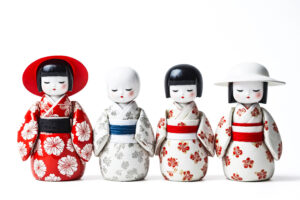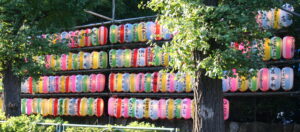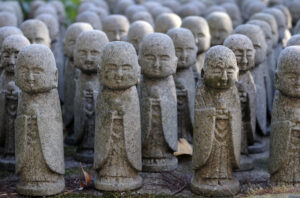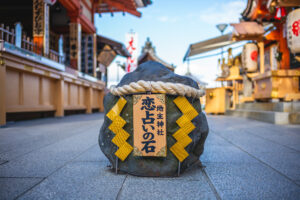In the heart of Japan’s rich and intricate craft culture lies the delicate and revered art of making washi paper. This ancient tradition, which dates back to the 7th century, has not only survived the modern onslaught of digitalization and industrial manufacturing but has also thrived, evolving into a symbol of Japanese aesthetics and philosophy. Unfolding the layers of washi paper reveals a compelling narrative about Japan’s historical dedication to craftsmanship, the resilience of its artisans, and the innovative spirit that drives the country’s art circles today. This article delves into the multifaceted world of washi paper, exploring its roots, manufacturing process, significance in Japanese arts, and its journey into the global art and design scenes.
Exploring the Roots of Washi Paper in Japan
Washi paper’s history is as rich and textured as the paper itself. Originating from China, the technique of papermaking was introduced to Japan over 1,300 years ago. The term "washi" comes from "wa" meaning Japanese, and "shi" meaning paper. This traditional paper was made using fibers from the bark of trees native to Japan, such as the mulberry tree. Washi’s introduction marked a significant cultural and technological milestone, influencing various aspects of Japanese society, from the creation of ancient scriptures to the development of traditional arts. The regions of Echizen, Tosa, and Mino became renowned for their washi production, each area developing its unique style and technique. Historical records and artifacts indicate the profound role washi played in the Heian period, a time when Japan’s nobility elevated art and literature to unprecedented heights.
The Delicate Process Behind Making Washi Paper
The traditional process of making washi paper is a testament to Japanese craftsmanship, requiring patience, precision, and skill. Unlike its western counterpart, washi is made from the long inner fibers of plants, which give it strength and durability. The process begins with harvesting and preparing the raw materials, which are then soaked and cooked to soften the fibers. Artisans beat the fibers to a pulp before mixing them with water in a vat. Through a process called sheet formation, the artisan dips a bamboo screen into the vat, swirling it to spread the pulp evenly before lifting it to drain and form a sheet. The sheets are then pressed and dried. This labor-intensive method has been passed down through generations, with each artisan adding subtle improvements and personal touches.
Washi: More Than Just Paper to Japan’s Artisans
To the uninitiated, washi may seem like mere paper. However, to Japan’s artisans, it represents a vessel for cultural expression, embodying the values of sustainability, longevity, and beauty. Washi is integral to numerous traditional crafts and practices, including calligraphy, origami, and ukiyo-e (woodblock printing). Artisans cherish washi for its texture, durability, and its unique ability to absorb ink or dye gracefully, allowing for a depth of expression unmatched by ordinary paper. The reverence for washi extends beyond its physical attributes, touching on its role in preserving and perpetuating Japanese heritage and artistry.
The Role of Washi in Traditional Japanese Arts
Washi paper is a cornerstone of traditional Japanese arts. Its versatility and quality have made it an essential material for practitioners of calligraphy, where the paper’s response to ink can convey subtle nuances of emotion and technique. In the world of origami, washi’s strength and flexibility enable complex and delicate folds that hold shape over time. Perhaps most notably, washi plays a critical role in ukiyo-e, where it serves not just as a canvas but as a collaborator in the artistic process, its fibers capturing and holding the vivid pigments of the woodblock prints. These practices underscore washi’s significance in Japan’s cultural and artistic identity, anchoring it firmly in the nation’s aesthetic consciousness.
Innovations Keeping the Washi Tradition Alive
Despite the challenges of modernization and cheaper, mass-produced alternatives, innovations in both technique and application are keeping the washi tradition alive. Artisans and entrepreneurs are exploring new uses for washi, extending its application to fashion, interior design, and even technology, with washi-based products like lamps, wallpaper, and smartphone cases emerging. Moreover, collaborations between washi craftsmen and contemporary artists and designers are breathing new life into this ancient material, creating a fusion of tradition and modernity that appeals to a global audience. These innovations are not just about preserving an ancient craft; they’re about ensuring its relevance and sustainability in the future.
How Local Craftsmen Are Shaping Washi’s Future
Local craftsmen are the keepers of the washi tradition, and their role in shaping its future cannot be understated. In rural areas where washi making still thrives, these artisans are experimenting with new materials and techniques to enhance the paper’s qualities and applications. Through workshops, apprenticeships, and festivals, they’re also engaging with younger generations and communities far beyond their locales, spreading awareness and fostering a new appreciation for washi craftsmanship. By adapting to the needs and tastes of the modern world while respecting the essence of traditional washi making, these craftsmen are ensuring that their legacy endures.
The Global Journey of Washi from Japan
Washi’s journey from the Japanese archipelago to the global stage speaks volumes about its universal appeal. Internationally, washi is celebrated for its beauty, sustainability, and versatility, finding a place in high-end art galleries, design studios, and craft circles. Exhibitions and trade shows around the world showcase washi, drawing attention to its applications in contemporary art and eco-friendly design. The international community’s growing interest in sustainable and artisanal materials has further elevated washi’s status, making it a symbol of the global movement towards more mindful and authentic modes of production.
Preserving Washi Techniques for Future Generations
The preservation of washi techniques is a critical concern for artisans and cultural preservationists alike. With the number of traditional washi craftsmen dwindling, efforts are being intensified to document and teach the intricate processes involved in washi making. Organizations and government bodies are providing support through funding, educational programs, and recognition, such as designating master craftsmen as living national treasures. These initiatives aim to attract new talent to the craft and ensure that the knowledge and skills necessary to produce washi are not lost to time but instead evolve and flourish.
The Environmental Impact of Making Washi Paper
The production of washi paper is inherently eco-friendly, utilizing renewable plant fibers and requiring minimal chemical processing. This sustainable approach aligns with contemporary environmental values, emphasizing the importance of natural materials and traditional, low-impact manufacturing processes. However, challenges such as the sustainable sourcing of raw materials and water usage still exist. Artisans and environmentalists are working together to address these issues, ensuring that washi making remains a model of eco-conscious craftsmanship.
Washi Paper in Contemporary Art and Design
Washi paper’s unique qualities are being embraced by contemporary artists and designers worldwide, who are drawn to its texture, translucency, and environmental credentials. In the art world, washi is used as a medium for both traditional paintings and avant-garde installations, offering artists a versatile canvas that connects them to a rich cultural tradition. In design, washi’s applications range from elegant lighting fixtures to biodegradable packaging, illustrating the material’s adaptability and appeal in the modern aesthetic landscape.
Supporting the Washi Industry: Challenges and Solutions
The washi industry faces several challenges, including competition from cheaper, mass-produced papers, a declining population of skilled artisans, and the need for more sustainable practices. Solutions are being found through innovation, education, and collaboration. By introducing washi to new markets and applications, expanding educational outreach to include international students, and embracing sustainable practices, stakeholders hope to secure a bright future for this ancient craft. Additionally, the recognition of washi making as a UNESCO Intangible Cultural Heritage has bolstered efforts to preserve and promote the tradition on a global scale.
From Ancient to Modern: The Evolving World of Washi
The world of washi is a vivid illustration of how tradition and innovation can coexist and enrich each other. As washi paper evolves from its ancient roots to find new relevance in a modern context, it continues to inspire and fascinate. By embracing both its rich heritage and its potential for contemporary application, washi remains a vibrant and enduring symbol of Japanese culture and craftsmanship.
The art of washi paper, with its deep roots in Japanese tradition and its branches reaching into the realms of modern art and design, stands as a testament to the enduring spirit of craftsmanship. As we have explored, from its historical origins to its role in contemporary art and environmental sustainability, washi embodies the seamless integration of beauty, utility, and ecological harmony. The challenges facing the washi industry are met with resilience and creativity by artisans and supporters worldwide, ensuring that this ancient craft not only survives but thrives in the modern age. In preserving the techniques and spirit of washi making, we preserve a vital link to the past while fostering a sustainable and inspired vision for the future.








